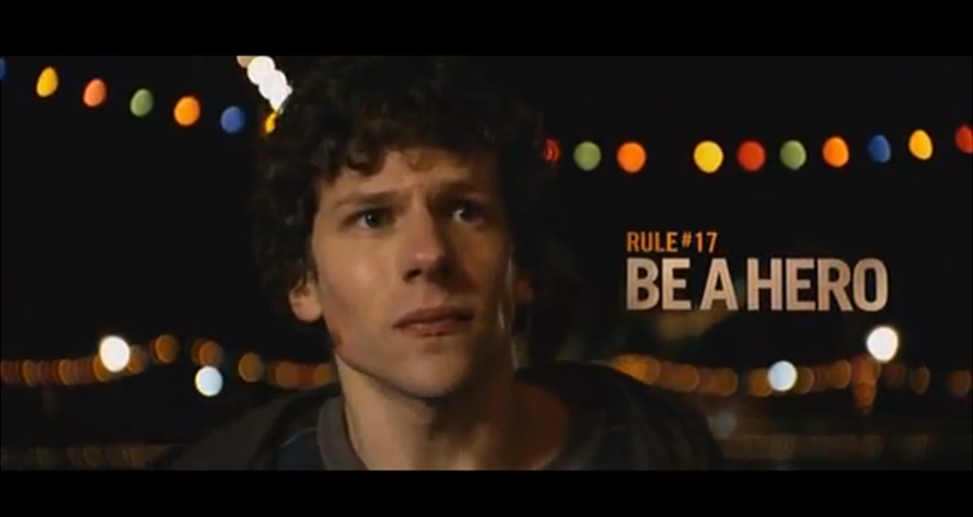Zombieland (2009)
1. Things I already know about horror include – jump scares, long and suspenseful moments, grotesque and disturbing imagery, the use of monsters or creatures, deaths in very graphic ways, and the stereotypes such as if you don’t believe that the horror is happening you will be one of the people killed and characters (dumb blonde, jock).
a. More from the others in class – a massive focus on tension, different types (slashers, psychological horrors), universal experiences (love, loss, conflict, friendship), its immersive (feel what characters feel), physical responses (anxiety, fear), dark colours, revenge/vengeful characters, villain origin story, abandoned house, haunting soundtrack, aimed to get a heartrate up, all basically come from folklore/mythology, often either really open spaces or really tight spaces
2. The tone of the movie is very clear from the first moments. It is shown to be a gory zombie movie that is meant to make you feel uneasy or frightened. Then your expectations are immediately subverted by Jesse Eisenberg beginning his description of his rules. The opening visuals scream the classic horror movie with gruesome kills and terrified people. All throughout the film, the visuals alone match how zombie movies often look. The zombies themselves are disgusting to look at and the set decoration gives off Walking Dead vibes with destroyed cars and broken windows. It is only through the main characters’ interactions with the world and the editing that you get the comedy aspect of the film. The plot of the film almost feels unimportant when all 4 of the main characters are interacting with each other. You get a good idea of where they are headed but it feels as though it doesn’t matter because there will always be zombies there. The time the characters spend together bring out the best moments of the movie and make you laugh (by design as this is a comedy). You expect them to reach their destination and see more zombies, but its okay. The mood of the film goes into intense moments when focused on the apocalypse and immediately cuts back to comedy with how the zombie is killed. The editing allows for the jokes to play out well, even in the background, as well as the soundtrack with hits that subvert expectations from usual horror films.
3. One of the big moments in the film for Woody Harrelson’s character is the reveal that the puppy he lost to the zombies was actually his son. It is the first serious moment for Harrelson in the film. Up to this point, everything he said or did was very comedic or meant to be a joke. This moment shifts the tone of the scene from the main characters having quality time together playing Monopoly to a heartfelt reveal. The moment also puts into perspective as to why Harrelson’s character acts like he does throughout the movie. Up to this point he would take his anger out on things and shoot his guns in the air for no reason. It makes sense after the reveal because his son was taken away from him and no longer has much reason to live or care about the consequences of his actions. Another pivotal moment is when Jesse Eisenberg’s character finally decides that his rules are not the end all be all of what he does and can be broken. He makes the tough choice of breaking a rule in order to save his love interest (Emma Stone’s character). Eisenberg’s choice is important to his character as he develops to someone who isn’t afraid to leave his shell from time to time to do the right thing. It is one of the few serious moments in the film and is surrounded by comedy/lighthearted moments in this film.

Provide Feedback